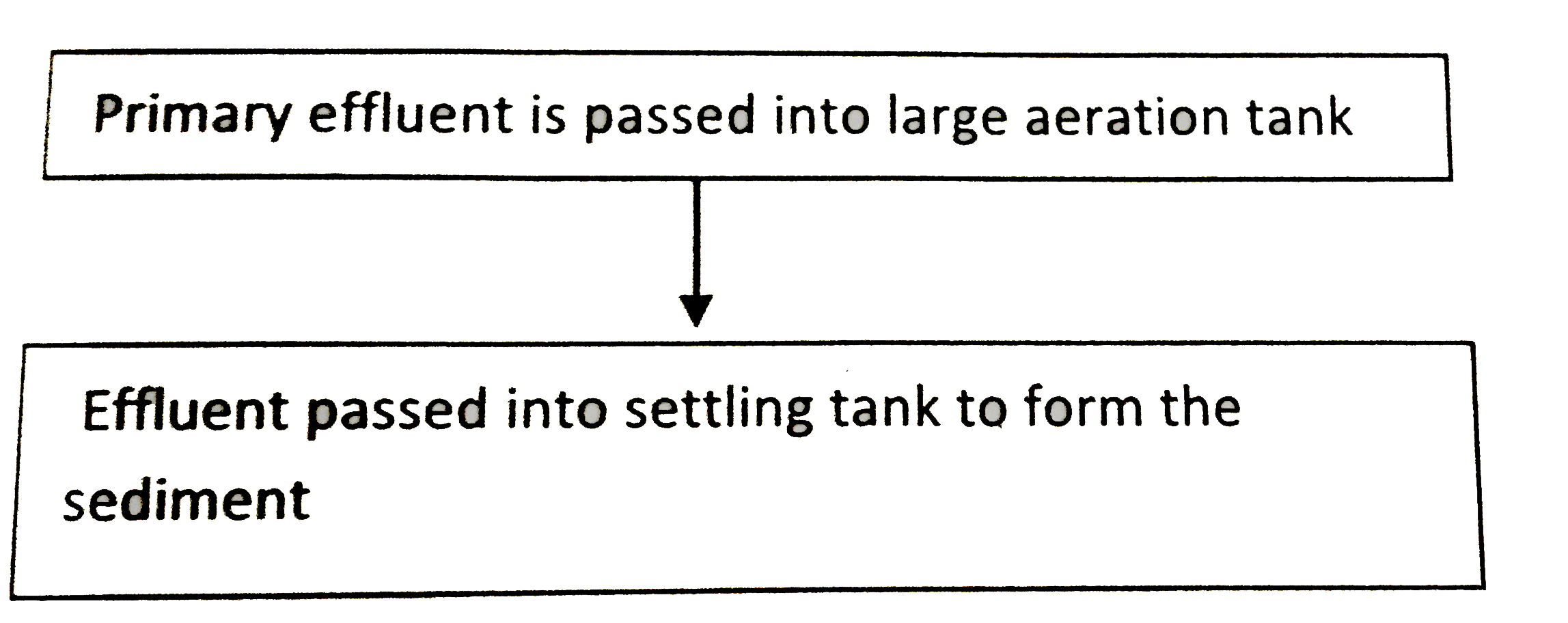Effluent means
Water remaining under the primary sludge .
Solid compunds of the sedimentation
Water remaning over the primary sludge
Flocs forms from the primary sludge
The correct Answer is:C
Step-by-Step Solution:
1. Understanding the Context: The term "effluent" is often used in the context of wastewater treatment, particularly in the treatment of sewage. It is important to understand what happens during the sewage treatment process.
2. Sewage Treatment Process: In sewage treatment, there are several stages, including primary treatment, where solids are removed from the wastewater. This involves processes like filtration and sedimentation.
3. Primary Treatment: During primary treatment, the solid waste settles at the bottom, forming what is known as primary sludge. The liquid that remains above this sludge is referred to as the effluent.
4. Analyzing the Options:
- Option 1: "Water remaining under the primary sludge." This is incorrect because the effluent is above the sludge, not below it.
- Option 2: "Solid compounds of sedimentation." This is incorrect as effluent refers to liquid, not solids.
- Option 3: "Water remaining over the primary sludge." This is correct because it accurately describes the effluent.
- Option 4: "Phlox formed from the primary sludge." This is incorrect as phlox refers to a structure formed by microbes during secondary treatment, not effluent.
5. Conclusion: Based on the analysis of the options, the correct definition of "effluent" is the water that remains above the primary sludge after the primary treatment of sewage.
Final Answer:
Effluent means the water remaining over the primary sludge after sewage treatment.
---
- Option 1: "Water remaining under the primary sludge." This is incorrect because the effluent is above the sludge, not below it.
- Option 2: "Solid compounds of sedimentation." This is incorrect as effluent refers to liquid, not solids.
- Option 3: "Water remaining over the primary sludge." This is correct because it accurately describes the effluent.
- Option 4: "Phlox formed from the primary sludge." This is incorrect as phlox refers to a structure formed by microbes during secondary treatment, not effluent.
Effluent means the water remaining over the primary sludge after sewage treatment.
Similar Questions
Effluent from secondary treatment contains…… which are killed by…..
View SolutionLarge quantities of sewage is generated everyday in cities and towns, which is treated in Sewage Treatment Plants (STPs) to make it less polluted. Given below is the flow diagram of one of the stages of STP.
Observe the given flow diagram and answer the questions accordingly

(a) Why primary effluent is passed into large aeration tanks?
(b) Write the technical term used for the sediment formed? Mention its significance
(c) Explain the final step that results in the formation of biogas in the large tank before the treated effluent is released into water bodies.
View Solution
Knowledge Check
During which stage of sewage treatment microbes are used
APrimaryBSecondaryCTertiaryDMicroorganisms are not used in ETPsAssertion Liquid waste products from industrial processes and domestic activity are termed as effluents.
Reason Fertiliser factories, steel and textile sugar mills are some industries, which release effluents.ABoth Assertion and Reason are true, but Reason is the correct explanation of AssertionBBoth Assertion and Reason are true, but Reason is not the correct explanation of AssertionCAssertion is true, but Reason is falseDAssertion is false, but Reason is trueWhich is correct ascending arragement of BOD of sewage (S) distillery effluent (DE). Paper mill effluent (PE) and sugar mill effluent (SE)
ASEltPEltSltDEBPEltSltSEltDECSltDEltPEltSEDSEltSltPEltDE
In which one of the following the BOD (Biochemical Oxygen Demand) of sewage (S), distillery effluent (DE), paper mill effluent (PE) and sugar mill effluent (SE) have been arranged in ascending order ?
View SolutionPhotocatalysis of effluents is carriedout with the help of
View SolutionIn which one of the following, the BOD (Biochemical Oxygen Demand) of sewage (S), distillery effluent (DE), paper mill effluent (PE) and sugar mill effluent (SE) have been arranged in ascending order ?
View SolutionIn which one of the following the BOD (Biochemical Oxygen Demand) of sewage (S), distillery effluent (DE), paper mill effluent (PE) and sugar mill effluent (SE) have been arranged in ascending order ?
View SolutionIn which one of the following the BOD (Biochemical Oxygen Demand) of sewage (S), distillery effluent (DE), paper mill effluent (PE) and sugar mill effluent (SE) have been arranged in ascending order ?
View Solution
